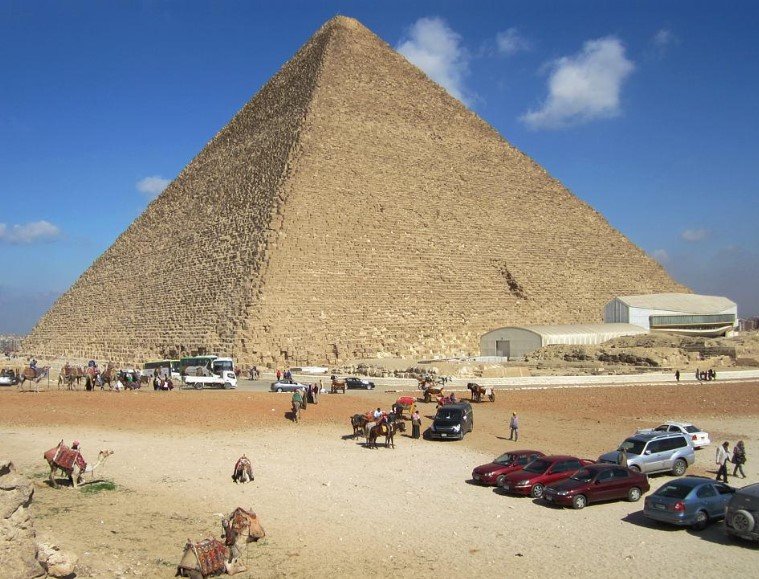Egypt is launching a massive upgrade of the iconic Giza Pyramids after years of tourist frustrations, but not everyone is cheering. Locals and experts are raising eyebrows about how the facelift could reshape one of the world’s oldest landmarks.
The stakes are high. With millions of tourists flocking to the ancient site every year, Cairo is betting big that new investments will turn grumbles into glowing reviews.
Giza Pyramids to Get a Major Makeover
The Egyptian government is putting about $80 million on the table to revamp the Giza Plateau, aiming to fix long-running complaints and future-proof the UNESCO World Heritage site.
Prime Minister Mostafa Madbouli, who announced the plans last year, said it plainly: these ancient treasures deserve better treatment — both for the sake of history and Egypt’s economy.
The pyramid site hasn’t kept pace with modern tourism standards. Overcrowding, harassment, scams, poor signage, lack of proper facilities — the list of issues kept growing. Visitors loved the grandeur but left feeling stressed, sometimes even cheated.
Now, the plan promises upgrades like:
-
New visitor centers with air conditioning and modern amenities
-
Expanded parking lots and better transportation links
-
Improved security and surveillance to crack down on tourist scams
-
Renovated pathways to make sites more accessible for elderly and disabled travelers
-
Digital guide systems for easier, self-paced tours
One Egyptian tourism official said, “It’s not about changing the pyramids. It’s about making the experience worthy of them.”

Complaints Forced the Government’s Hand
The government’s decision didn’t just come from thin air. Years of persistent complaints pushed officials to act.
In 2023, after mounting pressure, authorities launched a hotline for tourists to report scams, harassment, or poor service. The hotline quickly revealed just how deep the problem ran.
Some visitors reported being misled by unofficial guides. Others said they were pressured into paying outrageous fees for camel rides or souvenirs. And then there were the tales of overaggressive vendors, shady pricing schemes, and worse.
It became clear that without serious intervention, Egypt risked damaging its golden goose.
One travel blogger who visited Giza last year wrote, “I was blown away by the pyramids… but also blown away by how exhausting it was to fend off scammers every few minutes.”
Not Everyone Is on Board
Despite the bold vision, not all Egyptians or experts are sold on the project.
Some archaeologists fear that modern infrastructure could clash with the ancient setting. They argue that over-commercialization might chip away at the site’s authenticity.
An Egyptian archaeologist, who asked not to be named, said, “The pyramids don’t need a mall or a Starbucks nearby. They need protection, respect, and careful management.”
Others are worried about how transparent the upgrades will be. Big projects like this can sometimes prioritize aesthetics over genuine conservation.
Meanwhile, a section of local vendors who work near the site fear being pushed out. For decades, informal tourism businesses — camel drivers, souvenir sellers, snack vendors — have made their living around Giza.
A small-time camel handler said, “We depend on tourists. Will there still be a place for us after all these changes?”
That tension is real. And it’s growing louder.
Government Eyes Bigger Tourism Numbers by 2030
Egypt’s ambition here isn’t just about fixing problems — it’s about multiplying rewards.
Right now, about 18 million tourists visit Egypt annually, with the pyramids topping almost every itinerary. But Cairo has a bigger goal: drawing 30 million tourists per year by 2030.
The math is simple. More visitors mean more money. And with tourism contributing nearly 12% of Egypt’s GDP, the government sees investment in sites like Giza as crucial.
The Giza upgrade is part of a larger national strategy to modernize tourism hubs, promote Egypt’s “experience economy,” and compete with global destinations that offer ancient wonders paired with modern comforts.
One tourism official said, half-laughing, “People want Instagram moments, but they also want clean bathrooms.”
A Balancing Act Between Past and Future
Walking the line between preserving ancient heritage and modernizing for today’s traveler is no easy feat.
Authorities insist that nothing will compromise the sanctity of the pyramids themselves. The focus, they say, is on the surrounding infrastructure — not the monuments.
Still, some local critics remain wary. Memories linger of past projects around Egyptian heritage sites that didn’t exactly prioritize long-term preservation.
But officials are signaling more openness to expert consultations this time. Meetings with archaeologists, conservationists, and UNESCO advisors have reportedly been scheduled to review detailed blueprints before final approvals.
One senior government planner put it bluntly: “We cannot afford a mistake at Giza. The world is watching.” So while bulldozers and cranes may soon dot the desert skyline, the most important work — maintaining the delicate magic of Egypt’s most famous landmark — will happen behind the scenes, in every careful decision made.
For now, the pyramids themselves, silent as ever, watch history unfold once again at their feet.
